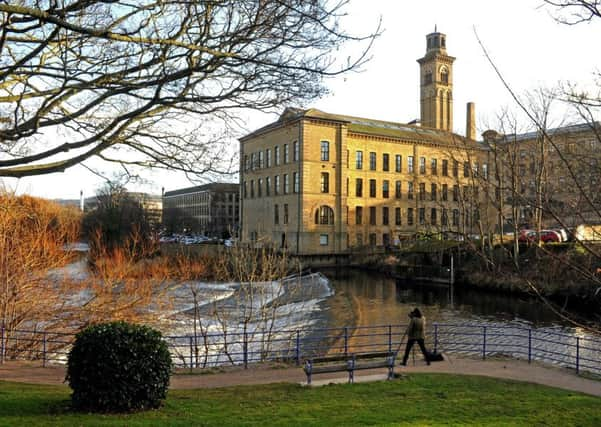History of industrial village of Saltaire makes it a focus of many a photograph


So it is no surprise that the industrial village of Saltaire, near Bradford, is the subject of many a photograph.
It was commissioned by Sir Titus Salt, an industrialist in the county’s woollen and textile industry and takes its name from its founder as well as the River Aire which runs through it.
Advertisement
Hide AdAdvertisement
Hide AdSalts Mill was the first building to be completed in 1853 and the village followed as he sought to build a new community where his workforce would be, in the words of the Visit Bradford tourism organisation, “healthier, happier and more productive”.
Still “exceptionally complete”, it was inscribed onto UNESCO’s World Heritage List in 2001.
“Saltaire is an outstanding and well preserved example of a mid 19th century industrial town, the concept of which was to exert a major influence on the development of the “garden city” movement,” the record states.
“The layout and architecture of Saltaire admirably reflect mid 19th century philanthropic paternalism, as well as the important role played by the textile industry in economic and social development.”
Advertisement
Hide AdAdvertisement
Hide AdWith mill buildings, workers’ housing, a park and public facilities including a hospital and school, Saltaire provided a model for similar developments both in this country and abroad.
It is the village’s New Mill that is being captured by a photographer in this image. The Grade II*-Listed mill was built in 1868, with an ornate chimney based upon the campanile of the church of Santa Maria Gloriosa dei Frari in Venice.
The River Aire, captured here, flows at one side of it, whilst the Leeds and Liverpool Canal runs between the complex and Salts Mill, which sits opposite, creating “a dramatic enclosed ‘canyon’ effect with the canal running between two tall buildings”, as The Canal and River Trust aptly describes.
Part of one of just 31 United Kingdom listed UNESCO World Heritage sites, this impressive location is certainly worthy of a visit.
Technical details: Nikon D3s with 28-70mm lens and exposure of 20th at f18, the camera rated at 200ISO.